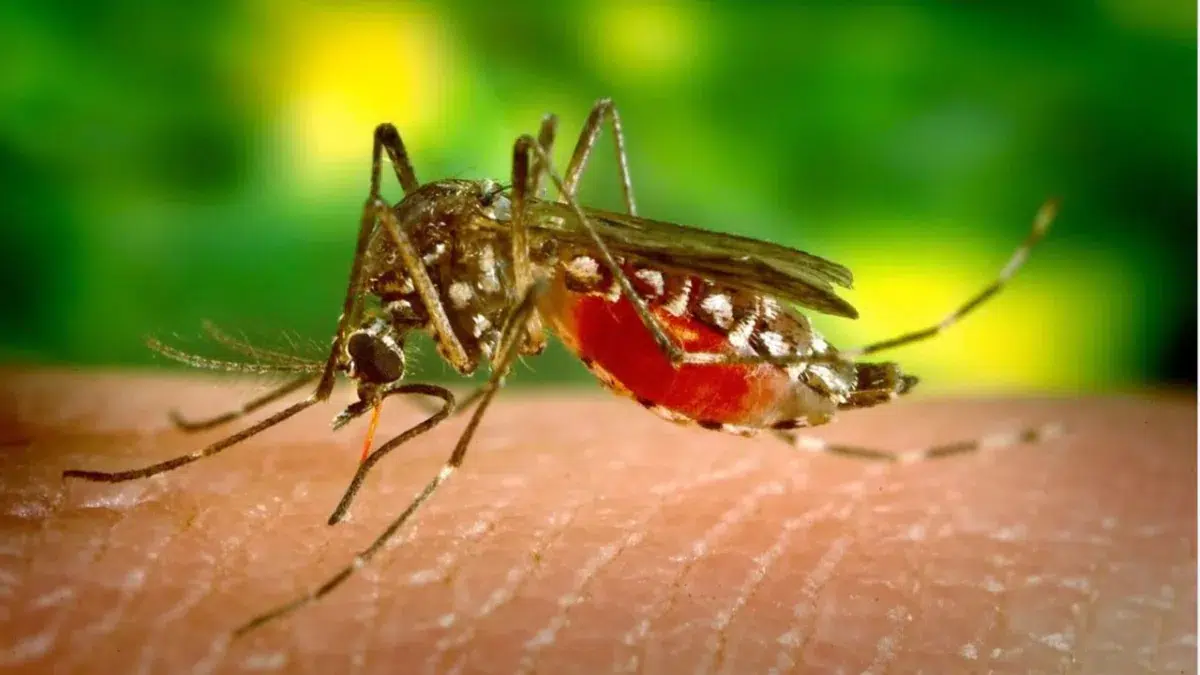Nagpur: As the summer heat settles over Nagpur, its residents are grappling with a relentless onslaught — not from the scorching sun, but from swarms of mosquitoes that have descended upon the city — plunging it into a state of itchy misery. Virtually no corner has been spared from the invasion of these disease-carrying insects, leaving citizens spending sleepless nights amidst the buzzing symphony of their wings.
The latest data from the Malaria and Filaria Department of the Nagpur Municipal Corporation (NMC) paints a grim picture of the mosquito infestation. In March alone, the mosquito density soared to a staggering 68.23%, marking the highest level recorded in the past 15 months. The majority of these mosquitoes belong to the Culex species, commonly known as common house mosquitoes, comprising 67.78% of the total population. The remaining portion comprises Aedes mosquitoes, notorious carriers of diseases such as dengue and chikungunya.
The surge in mosquito numbers poses a dual threat to the residents of Nagpur. While Culex mosquitoes may not transmit severe diseases, their incessant buzzing disrupts sleep and causes immense discomfort. On the other hand, the presence of Aedes mosquitoes raises concerns about the spread of deadly illnesses like dengue fever, chikungunya, and Zika virus.
The rise in mosquito population can be attributed to various factors, including the accumulation of stagnant water, which serves as an ideal breeding ground for mosquitoes. The onset of the rainy season exacerbates these conditions, facilitating the rapid proliferation of these disease vectors. Additionally, water-filled containers such as cooler pots and garden dishes have been identified as prime breeding sites, further contributing to the infestation.
In response to the escalating crisis, the Nagpur Municipal Corporation has initiated an intensified anti-mosquito operation across the city. Teams have been deployed to inspect households and educate residents on preventive measures to eliminate mosquito breeding sites. Mosquito larvae have been detected in various locations, including pots, dishes, tires, and scraps, underscoring the urgent need for concerted action.
Gardens and dense vegetation surrounding homes have also been identified as potential breeding grounds for mosquitoes, highlighting the importance of community-wide efforts in combating the infestation. It is alarming to note that mosquitoes require as little as 5 ml of water for breeding, emphasizing the significance of eliminating even the smallest water collections to mitigate the risk.
Despite these measures, the battle against the mosquito menace remains ongoing. The NMC continues to conduct awareness programs and urges residents to take proactive steps in eliminating mosquito breeding sites to safeguard public health. As Nagpurians endure the discomfort and health risks posed by the relentless mosquito invasion, concerted efforts are required from both authorities and citizens to stem the tide of this burgeoning crisis.
Mosquito densities
In October 2023, the density of Aedes mosquitoes stood at 1.15%, which gradually declined to 0.65% in November 2023 and further plummeted to 0.13% in December 2023. However, in January 2024, the density of Aedes mosquitoes remained stable at 0.13%, only to surge to 0.27% in February 2024. March marked a significant increase, reaching a concerning 0.45%.
According to the data, the density of Culex mosquitoes was 59.30% in October 2023, which decreased slightly to 57.52% in November 2023 before surging to 62.29% in December 2023. Over the past 3 months, there has been a rapid escalation in mosquito spread. In January 2024, the Culex density rose to 64.76%, followed by an increase to 66% in February 2024, and peaking at 67.78% in March 2024.















